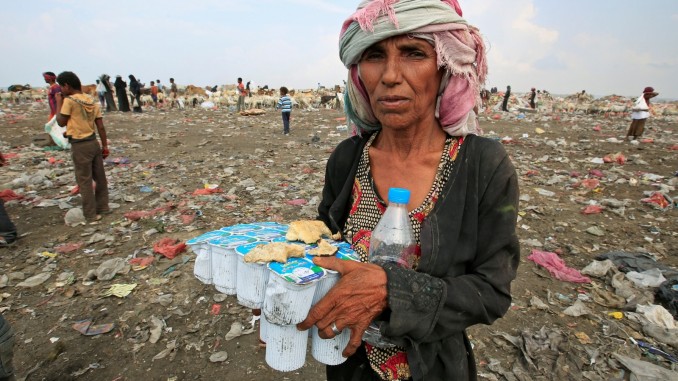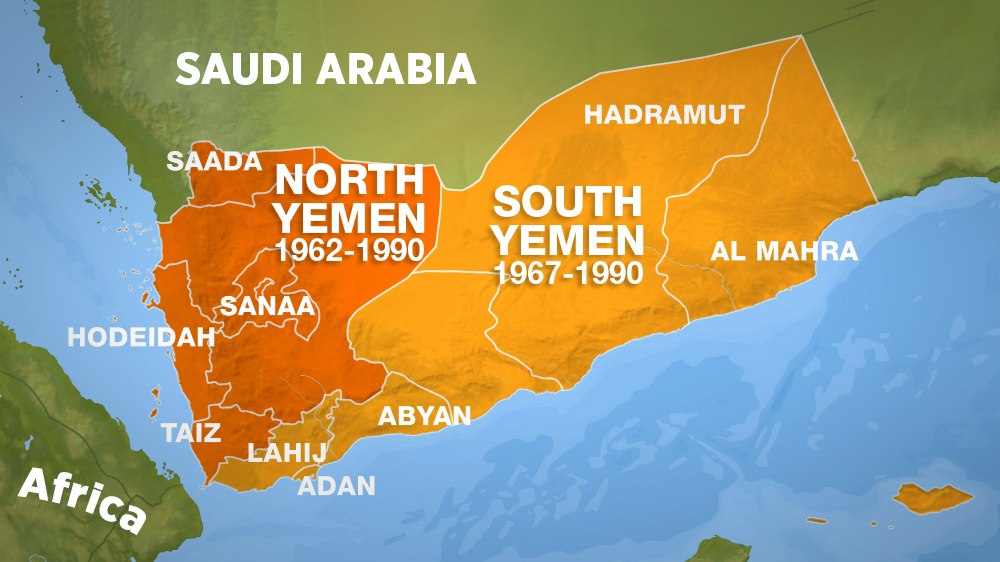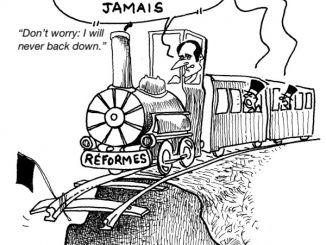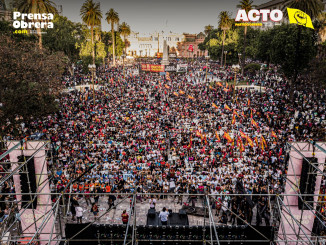
The people of Yemen have been suffering from an unprecedented famine since 2016, which is now one of the world’s worst humanitarian disasters. In a country of 29 million people, over 20 million suffer from food shortages and rely on humanitarian assistance. Over two million children under the age of five suffer from acute malnutrition.
Like the horrible famines in Ethiopia, Sudan, and Nigeria, the famine in Yemen is caused by war. Since 2014, the country has been torn apart by a so-called civil war, which is really a proxy war between foreign powers competing over the control of Yemen. The combatants within Yemen are the military forces loyal to President Hadi versus the rebels of the Houthi Movement. President Hadi is an ally of the Saudi Arabian ruling family, helping secure their business interests in Yemen. The extreme inequality and corruption of his government led to his ousting in 2014 by the Houthi rebels, who are backed by the government of Iran – the main rival of Saudi Arabia in the Middle East. In an attempt to restore Hadi to power, Saudi Arabia has been bombing Yemen relentlessly, destroying everything from schools to hospitals. A quarter of U.S. arms sales goes to Saudi Arabia, so it has the second most advanced military in the region (after Israel). It put Yemen under a military blockade in 2015, denying millions of Yemenis the foreign aid they have been forced to depend on for years, leading to this horrendous famine.
Why is there a proxy war in Yemen? And why do the majority of its people depend on foreign aid to begin with? The reason is very similar to that behind the other major famines and wars today: Yemen is a country torn by centuries of imperialism – the competition over its economic assets by foreign powers.
Since the 16th century, the Ottoman Empire (centered in what is modern-day Turkey) repeatedly attempted to conquer Northern Yemen. Their third major attempt in the 19th century met with resistance from the British Empire, which had taken the southern city of Adan in 1839. The port of Adan was crucial for British domination of trade between Europe and Asia. The Ottomans clashed with British efforts to expand their colonial control. The Ottoman-British treaty of 1904 split the country into North Yemen and South Yemen – a violently imposed border that continues to divide the country.

When the Ottoman Empire dissolved after its defeat in the First World War, the North fell back to the rule of the local Muslim clerics (imams). They continued to clash with the British over control of Adan and the South, as well as with the growing Kingdom of Saudi Arabia in the North.
In 1962, the King (and Imam) of North Yemen was overthrown by a coup led by rebels who advocated for a modern Republic. The coup launched a civil war between the royalist forces and the republican rebels that lasted until 1970. The royalists were armed and supported by Jordan, Saudi Arabia, Israel, and Britain. The republican rebels were supported by the Soviet Union and Egypt. The war expanded to the South, where the National Liberation Front (NLF) was established in 1963 and fought against the British occupiers. Britain was forced to hand over power to the NLF in 1967.
After the civil war, the NLF established a government in South Yemen that was allied with the Soviet Union and its client states. North Yemen was allied with the Western capitalist powers. The divided Yemen thus became yet another scene of Cold War tensions, which erupted in two border wars in 1972 and 1979.
The two Yemens were unified in 1990, but the new government did not last long. As the Soviet Union came close to collapse, it withdrew much of its support to its client states and by extension to Yemen. An even greater blow came during the Gulf War, when Iraq was attacked by the U.S. and Saudi Arabia over control of oil in the region, and Yemen’s government refused to support the U.S.-led invasion. In retaliation, Saudi Arabia withdrew all its support to Yemen, which then entered a deep economic crisis. The ensuing food riots and political assassinations led to the collapse of the unification government. The leaders of the South and North came into increasing conflict in 1993. This culminated in a two-month civil war in 1994 between the secessionist Southern leaders and the pro-unification leaders of the North, which prevailed.
The economic disaster of the 1990s led the government to accept the “aid” of the International Monetary Fund (IMF) and World Bank. These predatory institutions, which are tied to Wall Street, routinely exploit poor countries by lending to their governments on the condition of extreme exploitation of the workers. The intervention of these banks had the same effect it has on other countries that fall prey to this bankers’ scheme: rising inequality, poverty and hunger among the workers and farmers.
The discontent and resentment against the regime gave rise to the Houthi movement, which launched a series of anti-government rebellions in 2004. When the Arab Spring started in 2011 against governments in the region, it swept over Yemen and swelled the anti-government movement even further. Even sections of the military went over to the side of the anti-government rebels. In 2015, the Houthis dissolved the parliament and placed President Hadi under house arrest. He later fled to Saudi Arabia, which began a massive bombing campaign in Yemen in order to return him to power.
The people of Yemen are being bombed and blockaded into starvation by the Saudi government, which is armed with U.S. weapons. The war and famine in Yemen is often called a “civil war”, but this phrase should not fool us into thinking that the source of the conflict is among the Yemeni people. Like the people of many other exploited countries, they are caught in the crossfire of major foreign powers — in this case the U.S. and Saudi Arabia versus Iran — who do not represent their interests.




